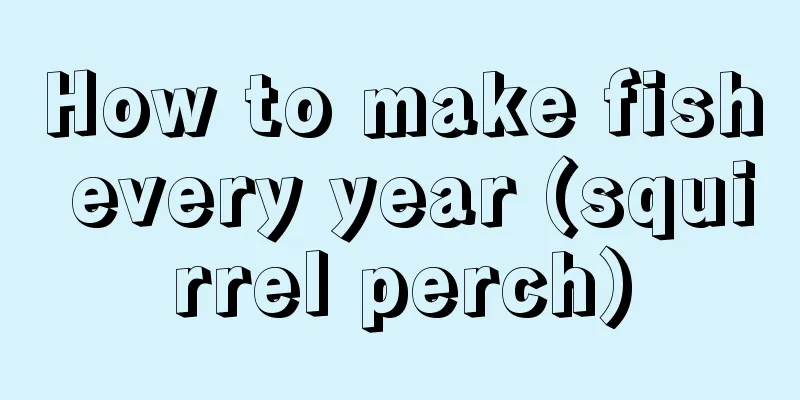Can crab and hawthorn be eaten together?

|
Although crabs taste delicious, everyone must check some of the eating taboos of crabs before eating them. Because crabs, as a kind of seafood, contain a lot of protein, minerals and iodine, when combined with some tannic acid in food, they will form tannic acid protein, which can cause symptoms such as constipation and nausea in the human body. Hawthorn has a very sour taste, so can hawthorn be eaten with crabs? Can I eat hawthorn after eating crabs? It is generally not recommended to eat hawthorn after eating crabs. Crabs are seafood, and we believe that hawthorn and seafood should not be eaten together. Seafood is rich in calcium, iron, carbon, iodine and other minerals and protein, and hawthorn contains tannic acid. If eaten with seafood, tannic acid protein will be synthesized. This substance can cause constipation and trigger symptoms such as nausea, vomiting, and abdominal pain, so it is not suitable to be eaten together. After eating crabs, it is recommended to rest for a while and eat hawthorn after digestion is complete. Taboos on eating crabs 1. River (lake) crabs must be steamed and cooked thoroughly. Do not eat raw crabs. River (lake) crabs feed on animal carcasses or humus, so the crab's body surface, gills and gastrointestinal tract are covered with various bacteria and sludge. How can some people not get sick because they do not wash crabs cleanly, do not steam or cook them thoroughly, or eat them raw, drunken or pickled crabs, and thus eat the germs or parasites in the crab's body. This problem will not occur if the crabs are steamed or cooked thoroughly before eating. 2. River (lake) crabs should be eaten fresh; dead crabs should not be eaten. The rigor mortis and autolysis periods of river crabs are greatly shortened after death. The bacteria in the crab's body will multiply rapidly and spread into the crab meat, causing vomiting, abdominal pain, and diarrhea in the eater. The shell of a fresh live crab is glossy blue-black, with a full navel and a clean white abdomen. The shell of a dying crab is yellow, and its legs are soft, making it difficult to turn over. 3. Crabs should be steamed and eaten immediately, do not store them. If you cannot finish the meal, the remaining food must be kept in a clean, cool and ventilated place, and must be put back into the pot and cooked and steamed thoroughly before eating. 4. Don’t chew crabs too quickly when eating them. When eating crabs, you should pay attention to four things after opening the lid: clean the crab stomach, which is the triangular bone bag in the crab shell. Eat the crab shell first, use a small spoon to scoop out the crab stomach in the middle, and gently suck the crab roe wrapped around the outside. Be careful not to suck open the triangular cone-shaped crab stomach in the middle, as it contains dirty sand and should be discarded. After eating the crab shell, it is time to eat the crab body. First, use scissors to cut off the excess crab legs and crab mouth. Use the handle of a spoon to pick out the hexagonal piece in the middle of the crab body. This is the crab heart and should be discarded. There are also crab intestines, which are a black line from the crab stomach to the crab navel; and crab gills, which are two rows of soft things like eyebrows growing on the crab's abdomen, which should all be removed. 5. Eat less, not too much. Crab meat is cold in nature, so people with weak spleen and stomach should be especially careful to avoid abdominal pain and diarrhea. 6. Do not eat with tea. Do not drink tea while eating crabs or within 1 hour after eating crabs. Because boiling water will dilute stomach acid, tea will cause certain components of the crab to coagulate, which is not conducive to digestion and absorption, and may also cause abdominal pain and diarrhea. 7. Don’t eat it with persimmons. When crabs are fat, persimmons are ripe. Be careful not to eat these two things at the same time. Because the tannic acid and other ingredients in persimmons will cause the crab meat protein to coagulate, the coagulated substance will ferment and rot if it stays in the intestines for a long time, causing reactions such as vomiting, abdominal pain, diarrhea, and may also cause stones. 8. Five types of patients are not suitable for consumption. Patients suffering from cold, fever, stomach pain and diarrhea. People with chronic gastritis, duodenal ulcer, cholecystitis, cholelithiasis, and active hepatitis. People with coronary heart disease, hypertension, arteriosclerosis, and hyperlipidemia should eat less or not eat crab roe because it contains high cholesterol. People with allergies. People with weak spleen and stomach. 9. Do not eat persimmons after eating crabs. Persimmons contain tannic acid and crab meat is rich in protein. When the two meet, they can coagulate into tannic acid protein, which is difficult to digest. Food can easily remain in the intestines and ferment, leading to symptoms such as vomiting, abdominal pain, and diarrhea. 10. Do not drink tea after eating crabs. Tea can coagulate certain components of crab meat, which is not conducive to digestion and absorption. Therefore, it is best not to drink tea while eating crabs or within one hour after eating crabs. |
<<: How to cook baby cabbage fried pork belly
>>: Can garlic and yogurt be eaten together?
Recommend
How to make fried pumpkin
There are actually many things to pay attention t...
How to make casserole lamb head
Many girls complained that the food was not good,...
How to make traditional braised pork and taro cake
In life, many of us may not know how to cook when...
How to make Japanese white sauce with edamame and konjac
For a single person, if a person of the opposite ...
How to make corn meat floss egg fried rice
People cannot live without food, clothing, housin...
How to make cranberry coconut bread
Nowadays, many people have lost interest in cooki...
How to make pickled black beans
Many of our friends often neglect eating and have...
How to make multigrain pancake sauce
The more important condiment in multi-grain panca...
How to make red velvet chiffon cake (6 inches)
As the saying goes, food is the first necessity o...
How to make steamed pork ribs with basil and plum
Many people don’t know how to cook, which is norm...
How to make hot dog rolls
I live a monotonous life every day, starting from...
How to make small baguette
Food is the most important thing for people. Only...
How to make sesame double shredded kelp
Now we are entering the early autumn season, so m...
How to make mutton pilaf
Friends are made through getting along with each ...
How to make green tea salty porridge
Twenty years ago, you wouldn't have chosen yo...









